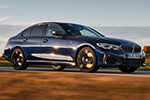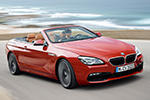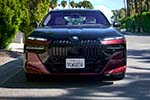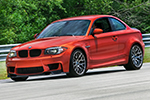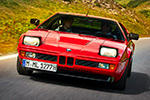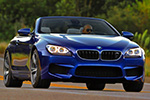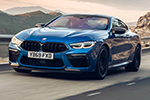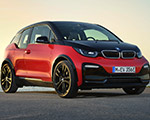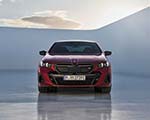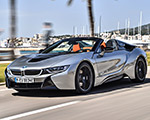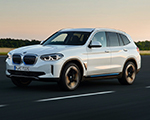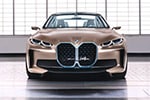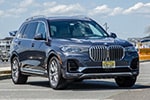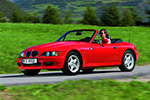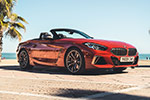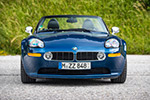The 2026 BMW iX3 is more than just a new electric SUV — it’s the first production model of BMW’s bold Neue Klasse era, a reinvention on the scale of the company’s 1960s rebirth. After years of teasers and concepts, the wait is finally over. Bigger, faster, and smarter than before, the iX3 introduces BMW’s sixth-generation electric drive system, cutting-edge digital cockpit, and a fresh design language meant to carry the brand into the next decade.
BMW claims Neue Klasse is the single largest investment in the company’s history. Chairman Oliver Zipse describes the ambitious project as a “new era,” heralded by the iX3. Codenamed “NA5,” the overhauled electric crossover has virtually nothing in common with its CLAR-based predecessor: “Practically everything about it is new, yet it is also more BMW than ever,” adds Zipse.
From Concept to Reality: Vision Neue Klasse X Becomes the iX3
We first caught a glimpse of the iX3 last year when the Vision Neue Klasse X concept broke cover. That concept has now matured into a production model, ushering in a new design language BMW describes as “reduced, characterful, and timeless.” Beauty is subjective, of course, and customers will ultimately decide. Still, there’s no denying BMW’s effort to declutter its designs with fewer lines and creases.
The cleaner look with flush door handles and smoother surfaces brings tangible aerodynamic benefits. The drag coefficient has dropped from 0.29 to just 0.24, helped in part by aero-optimized wheels. The iX3 will come standard with 20-inch alloys, while higher trims will upgrade to 21- or 22-inch sets. Some of them will be available through BMW Individual, alongside lighter Air Performance wheels.
Cleaner Design, Better Aerodynamics
Visually, the iX3 stays true to the Vision Neue Klasse X before it. A retro-inspired vertical grille nods to the original Neue Klasse models from the 1960s, though in 2025, chrome has given way to lighting. The front fascia gains a striking illuminated contour around a tastefully proportioned grille. No gigantic kidneys here, thankfully.
Futuristic headlights with vertical LEDs give the iX3 a concept-car vibe, making it look immediately more modern than its predecessor. Horizontal light strips flanking the grille add width to the front and emphasize the concept feel. The “reduced” approach also meant deleting the “i” badge. In fact, even the M badges on the fenders are now history. Talk about less is more.
At the rear, redesigned taillights stretch much farther inward than before, almost meeting in the center, were it not for the BMW roundel bisecting them. The design closely mirrors the Vision Neue Klasse X, making the previous iX3 look instantly older by comparison. One subtle change: the model designation badge has moved to the right. Initially, the only version will be the 50 xDrive. Other variants will follow, including an “entry-level” model. Expect a rear-wheel-drive single-motor version, an M Performance flavor, and even a full M in the coming years.
Inside the Future: Panoramic Vision and iDrive X
Step inside, and the changes are even more dramatic. Forget everything you know about the old iX3; this is something else entirely. The rotary knob is gone, as is the digital instrument cluster. In their place: BMW’s largest-ever touchscreen, measuring 17.9 inches and angled 17.5 degrees toward the driver. With a resolution of 3,340 x 1,440 pixels, the graphics should be exceptionally crisp.
That central screen also manages another display, or rather, a projection. Panoramic Vision spans the lower windshield from A-pillar to A-pillar on a 43.3-inch (110-cm) nano-coated black-printed surface. It features three fixed tiles in the driver’s view, replacing the instrument cluster, plus six configurable widgets to the right. Drivers drag and drop content from the central display to Panoramic Vision.
For those wanting even more, a 3D head-up display is available as an option. Positioned above the left-side Panoramic Vision tiles, it integrates navigation and driver-assistance info in what BMW calls a “neatly coordinated” way to avoid visual overload.
The steering wheel adopts a so-called “shy-tech” approach: buttons illuminate only when their functions are available or active. Arranged on a relief-like surface with haptic feedback, they allow operation without looking away from the road.
Still, not everything has migrated to the screen or steering wheel. Between the seats, familiar controls remain, including a volume knob, a mute button, a gear selector, a parking brake, hazard lights, and heating/defrost buttons. The driver’s door also retains plenty of conventional switches, proof that BMW hasn’t gone entirely “reduced.”
Sixth-Generation eDrive: Lighter, Denser, More Efficient
Underneath, the iX3 debuts BMW’s sixth-generation eDrive system with improved motors and batteries. The upgrades cut weight by 10%, energy losses by 40%, and production costs by 20%. New round battery cells offer 20% greater energy density than today’s prismatic cells.
Charging performance is a major highlight. With 800V tech, the iX3 supports up to 400 kW at compatible stations. Its 108-kWh usable battery charges from 10% to 80% in just 21 minutes and adds 217 miles (350 km) in 10 minutes. Speaking of which, range is equally impressive. BMW estimates 497 miles (800 km) on the WLTP cycle, and around 400 miles (644 km) per EPA. A Chinese-market long-wheelbase version, arriving next year, is rated at 559 miles (900 km) on the CLTC cycle. Bidirectional charging is supported too, allowing the iX3 to recharge devices (V2L), power your home (V2H), or feed energy back into the grid (V2G).
Performance and Dimensions: An SUV That Feels Bigger Inside
Performance comes from one electrically excited synchronous motor at the rear and a new asynchronous motor at the front. Together they produce 463 hp and 645 Nm (475 lb-ft), good for 0-62 mph (100 km/h) in 4.9 seconds and a 130 mph (210 km/h) top speed.
Dimensionally, the iX3 is slightly longer and wider but a bit lower than before: 4782 mm (188.2 in) long, 1895 mm (74.6 in) wide, and 1635 mm (64.3 in) tall. Its marginally elongated 2897 mm (114 in) wheelbase provides more space inside, comparable to a combustion SUV from the next segment up.
Practicality remains strong. Cargo space is 520 liters (18.3 cu ft), expandable to 1,750 liters (61.8 cu ft) with the rear seats folded. A front trunk, BMW’s first since the quirky i3, adds another 58 liters (2 cu ft). Roof racks and a tow hitch are available, with towing capacity rated at 2,000 kg (4,410 lbs). The new BMW iX3 has a weight (DIN/EU) of 2285-2360 kg (5,038–5,203 lbs).
Options, Trims, and Customization
Options are plentiful, from M Sport Packages and real leather upholstery to a panoramic roof you can combine with a sunblind. Heated and powered seats, two-zone automatic climate control, wireless charging, and an alarm come standard. At launch, color choices will include one solid paint and five metallics, such as Ocean Wave Blue and a new Polarized Grey, with three more metallics coming in spring.
Following its public debut next week at the IAA Mobility Show in Munich, the second-generation BMW iX3 enters production in November at the new Debrecen plant in Hungary. The China-specific version will arrive in 2026 from Shenyang.
Coming to America Summer 2026
BMW expects Europe and the U.S. to be the iX3’s largest markets. Spotted this week testing as a prototype, a new i3 sedan built in Munich will join the lineup next year. But the Neue Klasse won’t be limited to EVs. The electronics and software architecture will be integrated into every single BMW in the portfolio, be it gasoline, diesel, plug-in hybrid, or electric.
BMW iX3 Exterior Design
BMW iX3 Studio Photos
BMW iX3 Interior Design
BMW iX3 Design Sketches
BMW iX3 Technical Images
FAQ: 2026 BMW iX3
BMW estimates around 497 miles (800 km) on the WLTP cycle, roughly 400 miles (644 km) under EPA testing. A Chinese-market long-wheelbase version is rated at 559 miles (900 km) on the CLTC cycle.
With its 800V architecture, the iX3 supports up to 400 kW charging. That means 10% to 80% in about 21 minutes, or 217 miles (350 km) of range added in just 10 minutes.
The new iX3 is the first production model on BMW’s Neue Klasse platform. It features a fresh design language, BMW’s largest-ever touchscreen with Panoramic Vision projection, sixth-gen eDrive technology, and a new aerodynamic body.
Production starts in November 2025 at BMW’s new Debrecen plant in Hungary. A China-specific long-wheelbase version will follow in 2026.
The iX3 targets the same premium electric SUV segment. Compared to Tesla’s Model Y, it offers more range, faster charging, and a higher-quality interior. Against the Mercedes EQC, the iX3 brings newer tech, longer range, and BMW’s next-generation digital interface.


























































































































